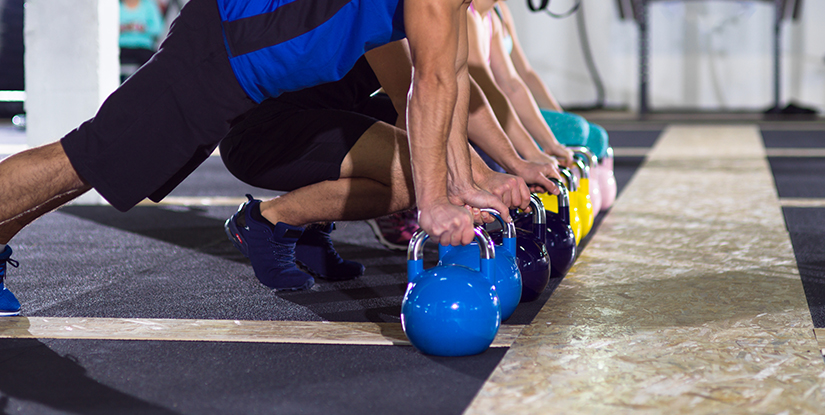Kettlebell core exercises are a great option for beginners who want to train their core but don’t know where to start. Online advice about core exercisescan be confusing, and some exercises feel too advanced or unsafe. So, this guide will help you choose the right moves.
Why Kettlebells Are Ideal for Core Training
As a beginner or when recovering from an injury, you want to train your core to feel stronger and more stable.
So you search online. But what do you find? As can be seen, confusing advice. As a result, long lists of exercises. Not only some are too hard, but also others don’t feel safe. Most don’t tell you if they’re even right for your body.
As someone who has also been through a period of confusion, my advice is to choose kettlebell exercise. As I have noted,they’re simple, only a kettlebell. Above all, they don’t take up much space. And they’re surprisingly powerful for core training. At the same time, unlike crunches or planks, kettlebell core exercises train your whole body.

7 Beginner-Friendly Kettlebell Core Exercises
Many beginners feel stuck when starting kettlebell core training.
That’s why I’ve put together 7 kettlebell core exercises perfect for beginners, people in recovery, or anyone starting from scratch.
| Exercise | Skill Level | Suitable For | Muscles Trained | Recommended Weight | Extra Tip |
|---|---|---|---|---|---|
| Kettlebell Deadlift | Beginner | All beginners, rehab, low back care | Core, glutes, hamstrings | 8–12kg (women) | Focus on slow, steady lifting with flat back |
| Kettlebell Swing (2-hand) | Beginner | Healthy beginners, learning power control | Glutes, hamstrings, core | 8–12kg | Hinge, don’t squat; let the bell float |
| Kettlebell Dead Bug | Beginner | Beginners building core control, people in rehab, anyone needing low-impact training | Deep core (transverse abdominis), abs, stabilizers, shoulders | 2–6kg kettlebell | Keep your lower back pressed to the floor. Move slow and focus on control. |
| Goblet Squat | Beginner | All levels, rehab, joint-friendly | Core, legs, posture | 6–10kg | Elbows inside knees, chest up |
| Kettlebell Side Bend | Beginner | Most beginners, especially for core and posture work | Obliques, lower back, stabilizers | 4–8kg | Move only at the waist — don’t lean forward or twist. Keep your chest up. |
| KB Pull Through | Beginner | Low impact, shoulder-safe | Core (anti-rotation), glutes, lats | 6–10kg | Keep hips low, don’t twist |
| KB V-Sit Hold or V-Sit + Press | Beginner | Core isolation, light recovery | Abs, hip flexors, shoulders | 4–8kg | Start with just the hold if pressing is too much |
Specific Movement Explanation
Kettlebell Deadlift

- Stand with feet hip-width.
- Place the kettlebell between your feet.
- Push hips back, bend knees slightly, and grab the handle.
- Stand tall by driving through heels. Keep back flat.
Two-Hand Kettlebell Swing

- Start in deadlift position.
- Swing the kettlebell back between your legs, then thrust your hips forward.
- Let the kettlebell rise to chest height.
- Don’t lift it with your arms — let momentum do the work.
Kettlebell Dead Bug

- Lie on your back. Hold a kettlebell in your left hand. Keep your left knee bent.
- Next, reach your right arm overhead and extend your right leg forward. Exhale as you move.
- Then, bring your arm and leg back to the starting position while you inhale.
- Switch sides and repeat.
Goblet Squat

- Hold the kettlebell by the horns at chest level.
- Squat down, elbows inside knees.
- Keep your chest up and heels flat.
- Stand up strong.
- Repeat.
Kettlebell Side Bend

- Stand tall. Hold a kettlebell in your left hand. Place your right hand on your ear.
- Bend your waist to the left. Keep your knees slightly bent.
- Return to the center.
- Now switch sides and repeat.
Kettlebell Pull Through

- Start in a high plank with the kettlebell behind one hand.
- Reach under your body and drag the kettlebell to the other side.
- Keep hips steady.
V-Sit Hold (or V-Sit + Press)

- Sit on the floor, lean back slightly, and put your feet up.
- Hold the kettlebell at your chest.
- For more challenge, press overhead while holding the position.
- Keep core tight.
Simple Weekly Plan for Beginners
At this instant, start slow. Focus on form. You only need 15–25 minutes a session. Here’s a sample 1-week plan:
| Day | Workout |
|---|---|
| Monday | Deadlift, Suitcase Carry, V-Sit Hold (3 rounds) |
| Tuesday | Rest or light walking |
| Wednesday | Swings, Pull Throughs, Marches (3 rounds) |
| Thursday | Rest |
| Friday | Goblet Squats, Suitcase Carry, V-Sit + Press (3 rounds) |
| Saturday | Optional: Light swings or march + stretch |
| Sunday | Full rest or gentle mobility work |
Start with what feels doable. At the present time, kettlebell core exercises are a safe and effective way to build real strength. At first, start simple, stay consistent, and let your progress grow over time.

Hi, I’m the editor here at Leadman Fitness. We’re a manufacturer focused on producing top-quality barbells, plates, kettlebells, dumbbells, and strength training gear. I’ve been into sports and fitness for years, and I know my way around all kinds of gym equipment—both from using it and helping create it.
I spend a lot of time understanding the real problems people run into in the gym—whether it’s beginners trying to pick the right gear or experienced lifters looking for something more durable. I stay in close touch with our production team and talk directly with other equipment makers, so we’re always improving based on what real lifters and coaches are looking for.
What I share comes from hands-on experience—stuff that actually helps people train better, not just in theory, but in real gyms.
